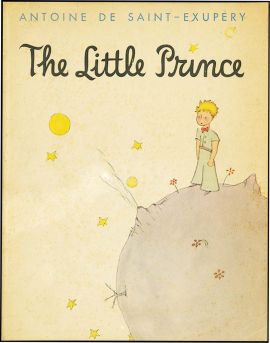
My son and I like to read aloud at bedtime, and recently we finished The Little Prince by Antoine de Saint-Exupéry. This ethereal 1943 novella follows the title character as he crosses the universe looking for…something. We’re not quite sure what at first.
The Little Prince is told through the eyes of an unnamed pilot who crash lands in the Sahara Desert. He’s astonished to see a boy seemingly come out of nowhere, but before he can get too much information out of him, the little guy asks him to draw him a sheep. And he’s picky. One sheep is too small. One’s too old. There’s always something that’s not right. Finally the pilot draws a box with air holes in it and tells the Prince there’s a sheep inside. Fortunately for his sanity it’s just what the wee monarch is after.
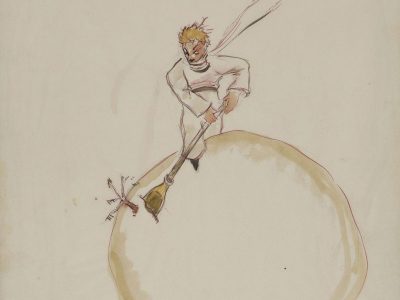
The Prince left his home planet after he realizes he can’t provide for his favorite red rose, who’s just as picky as he is. All along his journey he meets various grownups working in various jobs; everything from turning the stars on and off to counting money to ordering the universe. People are narrow-minded and not always receptive to the Little Prince’s questions, so out of frustration he moves quickly from place to place.
It’s not until the Prince lands on Earth that he makes friends and has time to discover a few things. He befriends a fox, who wants to be tamed, and a snake, who promises to help him if he ever gets homesick. The Prince’s stay is still short, though, because his rose is waiting for him, even though the pilot begs him to stay. To the pilot’s surprise and delight, the Little Prince has a going-away present for his new friend that just may change his life.
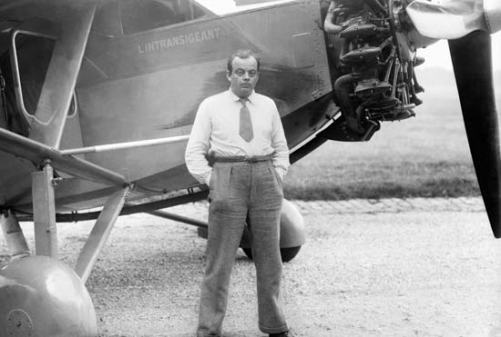
Antoine De Saint-Exupéry was born on June 29, 1900 in Lyon, France to an aristocratic family of reduced circumstances. From the beginning Antoine loved planes, making his first flight at the age of twelve. After failing to get into the École Navale, he briefly studied architecture before being drafted into the French Air Force in 1921. His experience as a military pilot allowed him to join airmail services in South America and Africa.
Funny thing about those mail planes: They would crash. A lot. On one occasion Antoine went down in the Sahara Desert and had to be rescued by Bedouins. The injuries resulting from these various incidences left Antoine with moderate disabilities, but he continued to fly.
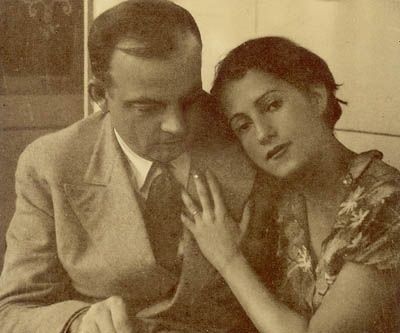
Planes weren’t Antoine’s only love. He wrote steadily, weaving his experiences as a pilot into his stories, and published his first novel, The Aviator in 1926. He became so successful that he was able to work as a journalist for a period of time, even covering the Spanish Civil War.
When France fell to the Nazis in 1939, Antoine went to New York, where he somehow managed to join the Allied forces as a reconaissance pilot. Before he went overseas he left behind the manuscript for The Little Prince, which was published in English in 1943 and quickly became a runaway bestseller. It’s since been published in over 250 languages.
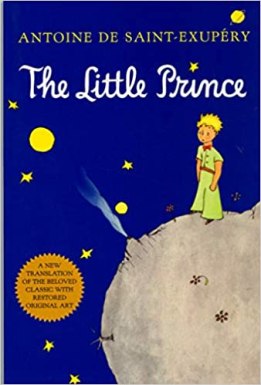
Interpretations of The Little Prince are legion; some people think it’s about sharing, while others see it as a cautionary tale about narrow-mindedness. Still others think it’s a veiled dig at overly jaded adulthood. To me, it’s all of the above, but it’s also about nurturing a child’s ambitions and allowing them to think for themselves instead of thinking for them. There’s a reason the Little Prince rewards the pilot. At last, a grownup has listened to him, and not only that, but a grownup who knows what it means to be stifled and pigeonholed as a child.
The story is so intriguing that it’s a perennial favorite among school drama teams (like this excellent production by St. David’s School in Raleigh, North Carolina). Naturally, it’s been brought to the screen several times as well, but some people seem to get it more than others. The first iteration was a clever 1966 Russian production that stuck pretty closely to its source material except that the desert was more of a part of the story. It bookends with the pilot looking and writing in his notebook while flying, which is something Antoine himself would do. The visuals are gorgeous, too, although the picture quality isn’t great. What makes it work is that overall it lets the audience draw their own conclusions.
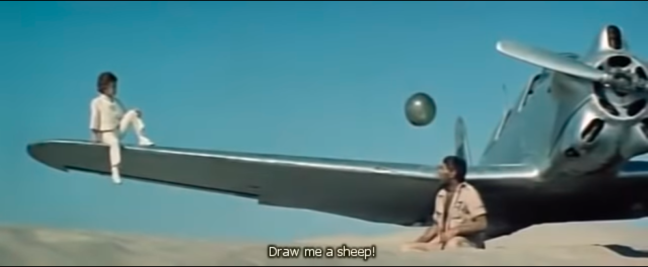
Stanley Donen’s 1974 version, on the other hand, took more chances. It stars Richard Kiley as the pilot and child actor Steven Warner as the title character, with the main ideas tempered by just enough sly winking.
What’s also fun is that it has human actors standing in for the non-human characters, among whom are Gene Wilder, who plays the Fox, and Bob Fosse, who plays the Snake. I like them both, but I’m slightly more partial to Bob Fosse because the choreography in that particular scene is awesome, and he does it on loose sand and dirt. Not easy, folks (See the number here).
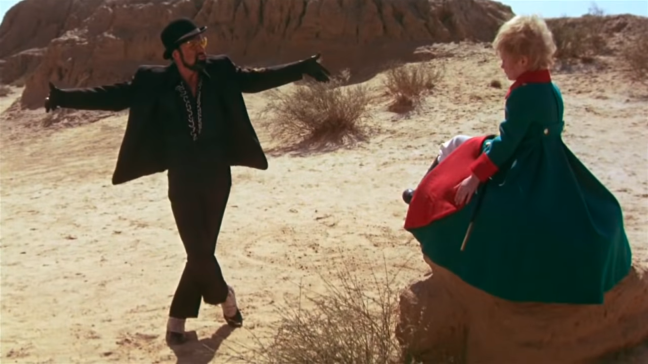
Probably the most well-known version to today’s kids is the 2015 Netflix animated film, which the service acquired from Paramount. It has an all-star cast that includes James Franco, Jeff Bridges, Marie Cotillard, Ricky Gervais, and Rachel McAdams and features some very competent CGI.
Its basic premise this this: A single mom wants her daughter to get into a super-exclusive private school, so she regiments every minute of her day. This girl can’t go to the bathroom or eat lunch without noting it on her schedule–a giant white board with magnets all over it.
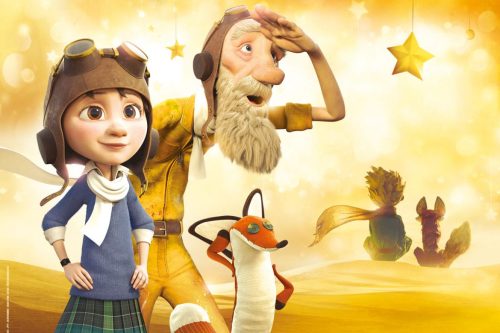
It just so happens that a plane crashes into the back of the little girl’s house, so naturally she meets the pilot next door. Yeah. He’s that pilot. As he and the little girl get to be friends, the pilot gives her more and more details about the time he crash landed in the Sahara Desert. The girl can’t get enough of the story, even after her mom finds the pilot’s manuscript and tears it in two. The pilot is also cooking up some secret contraption in his backyard, so there’s that.
The movie’s biggest fumble is that it takes most of the mystery out of the Little Prince and his quest. He’s not allowed to fade out gracefully. Oh no. He gets forced into some derring-do with a token bad guy.
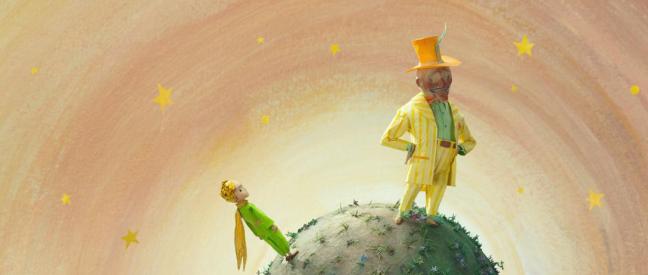
Sigh. I think this is one of the oddest filmed versions out there, because The Little Prince gets lost in rather bombastic though goodhearted framing. The film is cute enough, but it had to grow on me.
It would be interesting to know what Antoine De Saint-Exupéry would think of the long-term popularity of The Little Prince. He never lived to see it; his plane went down over the Atlantic during a reconnaisance flight and for decades no one knew what happened to him. It was a sad and ironic ending for a writer whose most important character disappeared mysteriously, leaving joy behind him.
The Valentine’s Day Period Drama Blog Party is coming up on Monday. Thanks for reading, all, and hope to see you then. Have a good week…
The 1974 and 2015 versions of The Little Prince are available from Amazon. The 1966 version is available on YouTube.
~Any purchases made via Amazon Affiliate links found on this site help support Taking Up Room at no extra cost to you.~
